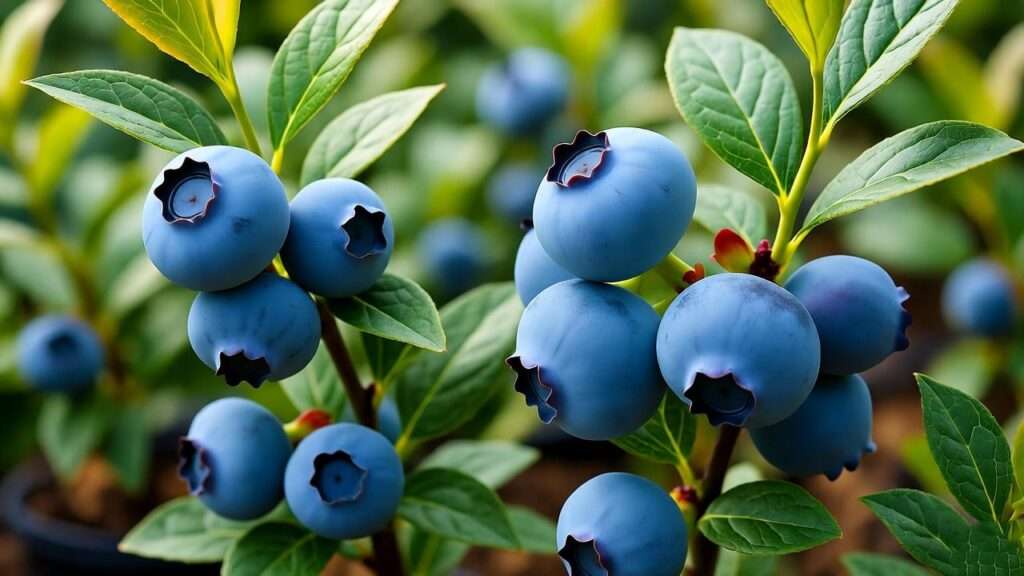Imagine plucking sweet, juicy blueberries from your own backyard, balcony, or patio! 🌞 With Sunshine Blue blueberry plants, this dream is within reach for gardeners of all skill levels. These compact, self-pollinating shrubs are a game-changer for anyone craving homegrown fruit without the hassle of large-scale gardening. Whether you’re a beginner or a seasoned horticulturist, this guide will walk you through everything you need to know to grow and care for Sunshine Blue blueberries, ensuring a bountiful harvest. As a horticulturist with over a decade of experience in berry cultivation, I’ve seen firsthand how these versatile plants thrive in diverse settings—from urban containers to sprawling gardens. Let’s dive into the world of Sunshine Blue and unlock the secrets to a thriving blueberry patch! 🫐
1. Why Choose Sunshine Blue Blueberry Plants? 🫐
1.1 Unique Characteristics of Sunshine Blue
Sunshine Blue blueberry plants are a standout choice for home gardeners. Growing to a manageable 3-4 feet tall, they’re perfect for small spaces, including patios and balconies. Unlike many blueberry varieties, Sunshine Blue is self-pollinating, meaning you don’t need multiple plants to enjoy a fruitful harvest. The berries are sweet-tart, packed with antioxidants, and ideal for snacking, baking, or preserving. In mild climates, their semi-evergreen foliage adds year-round visual appeal, with delicate pinkish-white flowers in spring and vibrant green leaves. According to research from Oregon State University, Sunshine Blue produces up to 5-10 pounds of berries per mature plant, making it a high-yield option for its size.
1.2 Benefits for Home Gardeners
For urban gardeners or those with limited space, Sunshine Blue is a dream come true. Its low-chill requirement (150-300 hours below 45°F) makes it ideal for warmer climates like USDA Zones 5-10, unlike high-chill varieties that struggle in milder regions. The extended harvest season—typically mid to late summer—means you’ll enjoy fresh blueberries for weeks. Personally, I’ve grown Sunshine Blue in a small backyard plot, and its compact nature never fails to impress. It’s low-maintenance, beginner-friendly, and delivers consistent results, even for those new to fruit gardening.
1.3 Comparison with Other Blueberry Varieties
Compared to high-chill varieties like Bluecrop (requiring 800+ chill hours) or Legacy, Sunshine Blue is far more adaptable to diverse climates. While Bluecrop needs colder winters, Sunshine Blue thrives in coastal or southern regions. Its self-pollinating nature also sets it apart from varieties like *Rabb “
iteye*, which often require a second plant for cross-pollination. For beginners, Sunshine Blue’s forgiving nature makes it less intimidating than fussier varieties, while still offering a robust yield. Its compact size also outshines sprawling varieties like Chandler, which can grow up to 6 feet and demand more space. Sunshine Blue strikes the perfect balance of productivity and practicality, making it a top pick for home growers.
2. Understanding the Needs of Sunshine Blue Blueberry Plants 🌱
2.1 Ideal Growing Conditions
To thrive, Sunshine Blue blueberry plants need specific conditions. They require full sun—6-8 hours daily—for optimal berry production, though they tolerate partial shade with slightly reduced yields. Soil is critical: blueberries demand acidic conditions (pH 4.5-5.5) and well-draining, organic-rich soil. Sandy loam or peat-based mixes work best. In warmer climates (USDA Zones 5-10), Sunshine Blue excels due to its low-chill nature, but gardeners in colder zones can succeed with proper winter care (see Section 6.2). Testing soil pH before planting is non-negotiable—kits are affordable and widely available at garden centers.
2.2 Watering Requirements
Consistent moisture is key, but Sunshine Blue dislikes soggy roots. Aim for 1-2 inches of water weekly, adjusting for rainfall and climate. Mulching with pine bark or wood chips (2-4 inches deep) helps retain moisture, regulate soil temperature, and maintain acidity. Pro Tip: Use rainwater or distilled water, as tap water can raise soil pH over time, stressing the plant. In containers, ensure pots have drainage holes to prevent root rot.
2.3 Space and Container Considerations
Sunshine Blue’s compact size makes it ideal for containers (15-20 gallons) or small garden beds. For in-ground planting, space plants 3-4 feet apart to allow air circulation and root expansion. In containers, use a high-quality acidic potting mix (see Section 3.2 for a recipe). Containers should be at least 18 inches deep to accommodate the shallow root system. Whether in pots or beds, ensure good drainage to mimic the plant’s natural habitat.
3. Step-by-Step Guide to Planting Sunshine Blue Blueberries 🌍
3.1 When and Where to Plant
The best time to plant Sunshine Blue blueberry plants is early spring or fall, when temperatures are mild, allowing roots to establish before extreme heat or cold. Choose a site with full sun and protection from strong winds. Avoid low-lying areas where water pools, as blueberries are prone to root rot. For urban gardeners, a sunny balcony or patio works perfectly for container-grown plants.
3.2 Preparing the Soil
Soil preparation is the foundation of a healthy Sunshine Blue plant. Test your soil’s pH using a home kit or lab service (available through local extension offices). If the pH is above 5.5, amend it with elemental sulfur or organic matter like peat moss, applied 4-6 months before planting for best results. For containers, mix a DIY acidic potting blend: 50% peat moss, 30% pine bark, and 20% perlite for drainage. Example: For a 15-gallon pot, combine 7.5 gallons peat moss, 4.5 gallons pine bark, and 3 gallons perlite. For in-ground planting, incorporate compost and sulfur into the top 12 inches of soil.
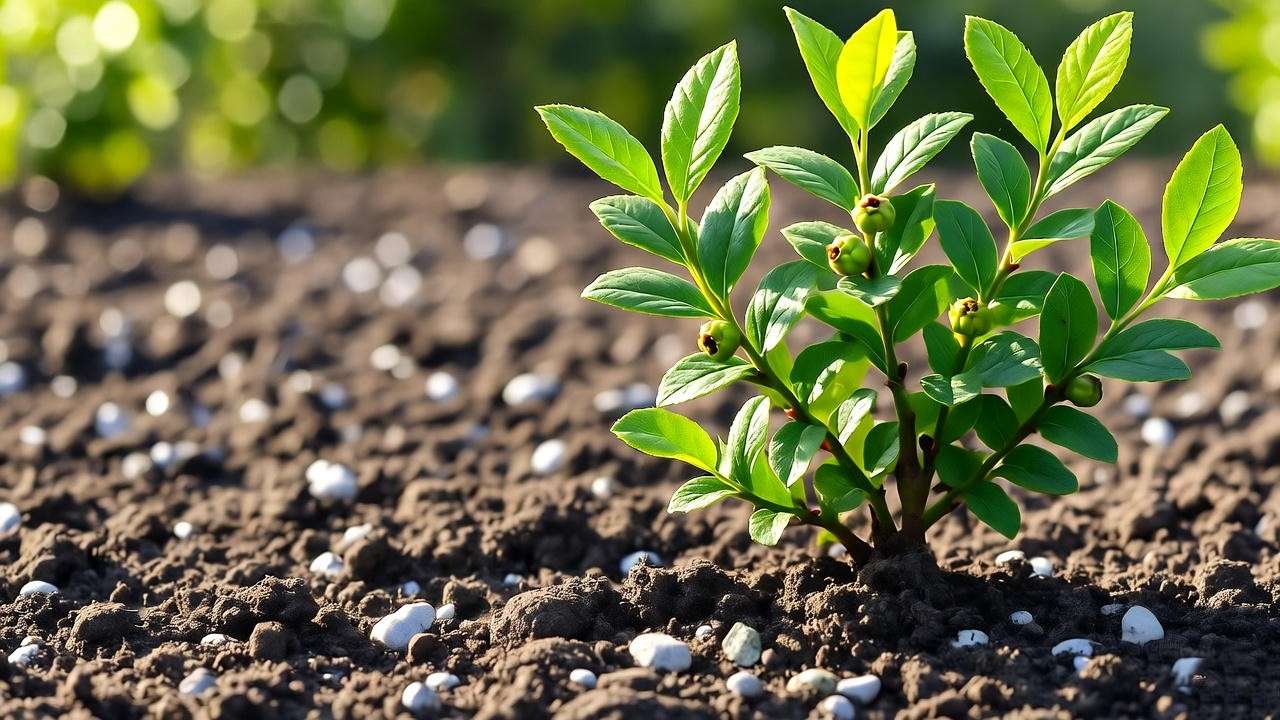
3.3 Planting Process
Follow these steps for successful planting:
- Dig the Hole: For in-ground, dig a hole twice as wide and as deep as the root ball (about 12-18 inches). For containers, ensure the pot is clean and has drainage holes.
- Position the Plant: Place the plant so the root crown is level with or slightly above the soil surface to prevent rot.
- Backfill: Fill with acidic soil mix, gently tamping to remove air pockets.
- Water Thoroughly: Soak the soil to settle roots, then apply 2-3 inches of mulch.
- Monitor: Check soil moisture daily for the first two weeks to ensure establishment.
Expert Insight: A 2020 study from the University of Georgia Extension emphasizes that proper root establishment in the first 6 months significantly boosts long-term blueberry yields. Avoid planting too deep, as this stresses shallow-rooted blueberries.
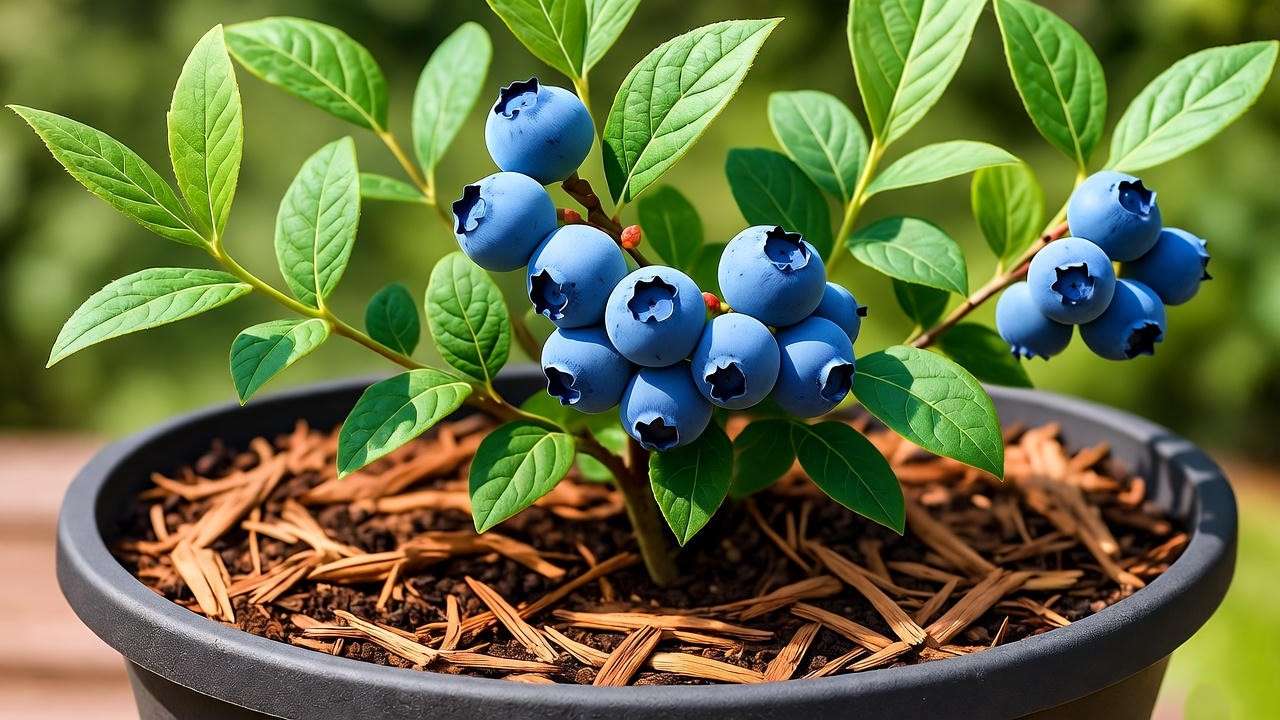
4. Caring for Your Sunshine Blue Blueberry Plants 🛠️
4.1 Watering and Mulching
Sunshine Blue thrives with consistent moisture but hates waterlogged roots. Water deeply once or twice weekly, providing 1-2 inches of water depending on weather. In hot climates, check soil daily, especially for container plants. Mulch is your ally: apply a 2-4 inch layer of pine bark, wood chips, or straw to conserve moisture, suppress weeds, and maintain soil acidity. Refresh mulch annually to prevent decomposition from altering pH. Pro Tip: If using tap water, test its pH periodically, as alkaline water can harm blueberries over time.
4.2 Fertilizing for Optimal Growth
Fertilize Sunshine Blue with care to avoid burning its sensitive roots. Use a fertilizer formulated for acid-loving plants, such as ammonium sulfate or a 10-10-10 blend with micronutrients. Apply in early spring as new growth begins and again post-harvest (late summer). For a mature plant, use 4-6 ounces of fertilizer per year, spread evenly around the drip line. Warning: Over-fertilizing can cause leaf burn or stunted growth—stick to recommended doses. Organic options like cottonseed meal or composted pine needles work well for sustainable gardeners.
4.3 Pruning for Health and Productivity
Pruning keeps Sunshine Blue productive and healthy. Prune in late winter or early spring before new growth starts. Remove dead, damaged, or crossing branches, and thin out older canes (over 4 years old) to encourage new, fruit-bearing growth. Aim to keep 6-8 strong canes per plant. Use clean, sharp shears to make clean cuts at a 45-degree angle. Visual Aid Idea: A diagram showing pruning cuts can help readers visualize the process. Regular pruning boosts air circulation, reducing disease risk and increasing berry size.
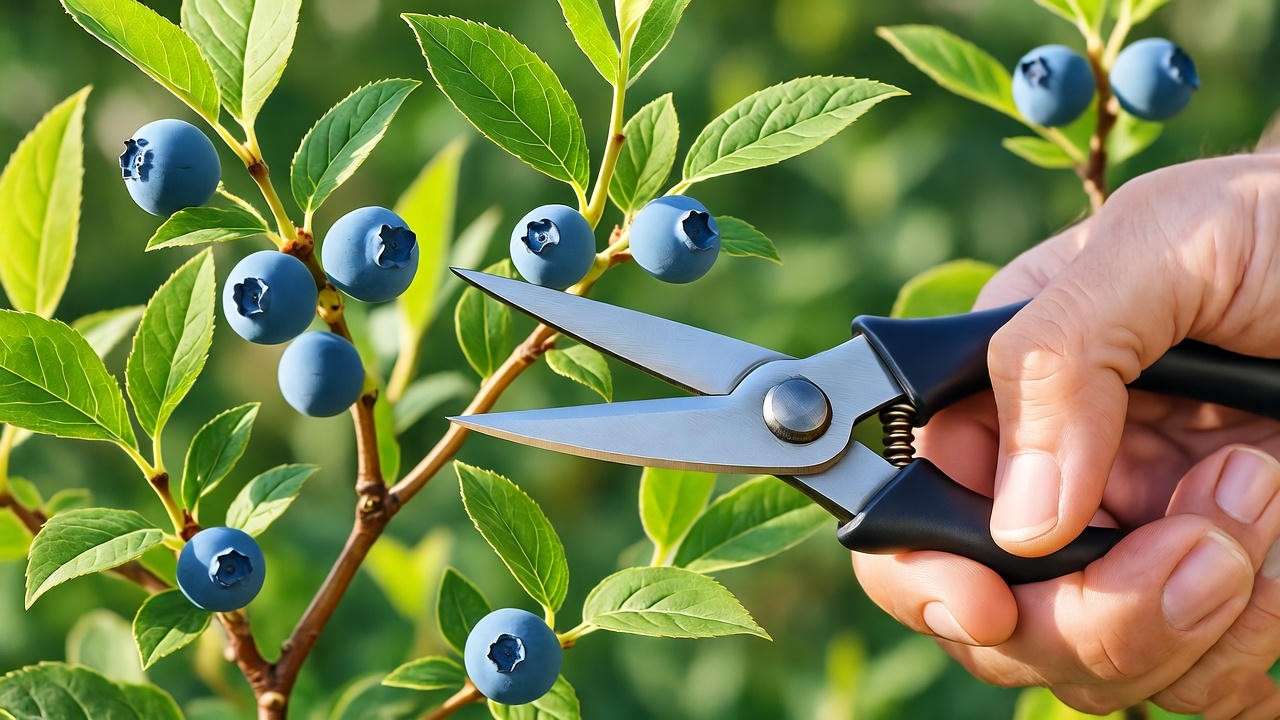
4.4 Pest and Disease Management
Sunshine Blue is relatively pest-resistant but not immune. Common pests include aphids, spider mites, and blueberry fruit worms. Inspect plants weekly, especially under leaves, and use insecticidal soap or neem oil for organic control. For severe infestations, consult your local extension service for targeted treatments. Diseases like powdery mildew or root rot can occur in humid or poorly drained conditions. Prevent mildew with good air circulation and avoid overwatering to prevent rot. Pro Tip: Plant marigolds or garlic nearby to deter pests naturally, as these companions repel aphids and other insects.
5. Harvesting and Enjoying Your Sunshine Blue Blueberries 🍇
5.1 When to Harvest
The moment you’ve been waiting for—harvesting your Sunshine Blue blueberry plants! Berries are ready when they turn a deep, vibrant blue and give slightly when gently squeezed. Taste a few to confirm their sweet-tart flavor, as color alone isn’t enough. Typically, Sunshine Blue ripens from mid to late summer, depending on your climate. Pick in the morning when berries are cool for the best flavor and texture. Use a gentle twisting motion to avoid damaging the plant or unripe fruit. Regular harvesting every 3-5 days encourages continuous production during the season.
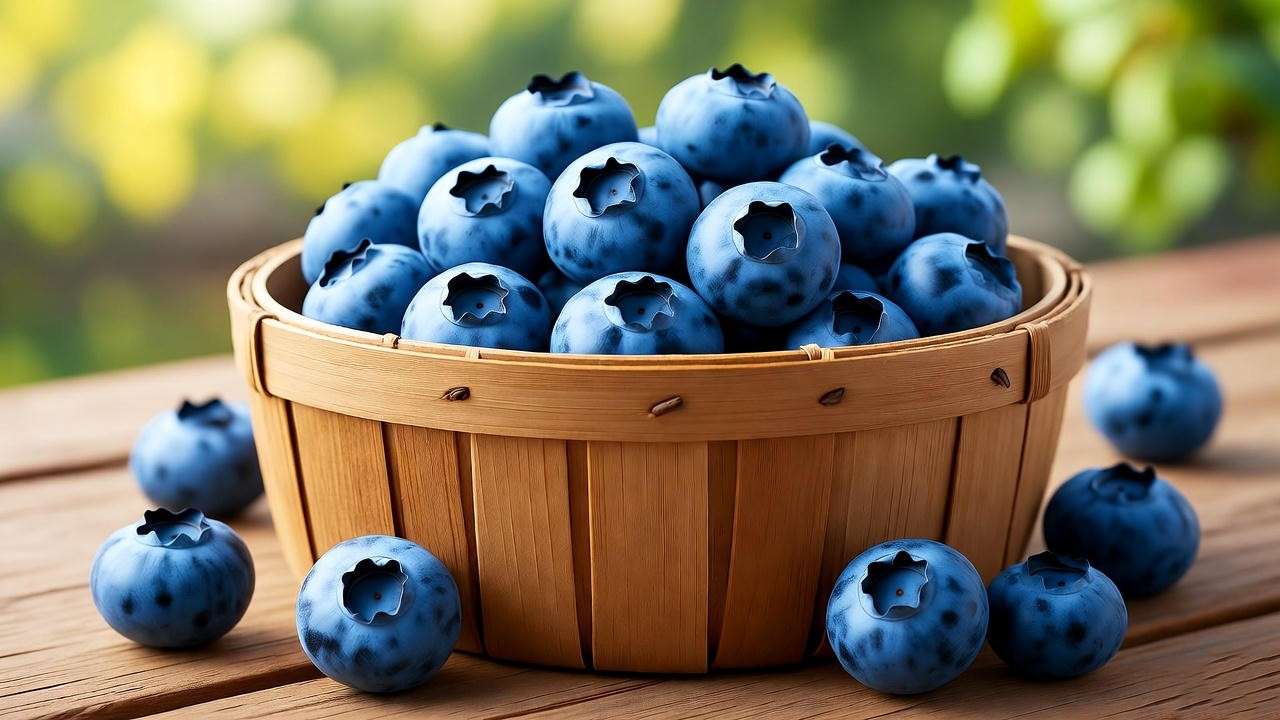
5.2 Maximizing Yield
To boost your harvest, ensure consistent care throughout the growing season. Adequate sunlight, proper soil pH, and regular watering are critical for high yields. Hand-pollination with a soft brush can enhance fruit set, though Sunshine Blue is self-pollinating. Store harvested berries in a breathable container in the refrigerator for up to two weeks, or freeze them for long-term use. For preservation, try drying or making jams—Sunshine Blue’s sweet-tart profile shines in homemade preserves. Recipe Idea: Blend a Sunshine Blue smoothie with 1 cup berries, 1 banana, ½ cup Greek yogurt, and a splash of almond milk for a nutrient-packed treat.
5.3 Troubleshooting Low Yields
If your Sunshine Blue isn’t producing as expected, investigate these common culprits:
- Poor Pollination: Even self-pollinating plants benefit from bees or manual pollination.
- Nutrient Deficiencies: Yellowing leaves may indicate nitrogen or iron deficiency—test soil and adjust fertilizer.
- Incorrect pH: If soil pH drifts above 5.5, berries may be sparse. Apply sulfur to lower pH gradually.
- Over-Pruning: Removing too many canes can reduce fruiting wood. Stick to pruning guidelines in Section 4.3.
Expert Insight: A 2018 study from Cornell University’s Horticulture Department found that maintaining optimal soil pH can increase blueberry yields by up to 20%. Regular soil testing is a small effort for a big payoff.
6. Advanced Tips for Thriving Sunshine Blue Plants 🌟
6.1 Companion Planting
Companion planting can elevate your Sunshine Blue garden. Pair with acid-loving plants like azaleas, rhododendrons, or ferns, which thrive in similar soil conditions and enhance your garden’s aesthetic. Marigolds and garlic deter pests like aphids, while clover can act as a living mulch to retain soil moisture. Avoid planting near vegetables like tomatoes or peppers, which prefer neutral to alkaline soil and may compete for nutrients or alter pH. Pro Tip: Interplanting with native wildflowers can attract pollinators, boosting fruit production naturally.
6.2 Winter Care in Colder Climates
While Sunshine Blue is hardy in USDA Zones 5-10, colder climates require extra care. For container plants, move pots to a sheltered area, like a garage, during freezing temperatures. Wrap pots in burlap or bubble wrap to insulate roots. For in-ground plants, apply a 4-6 inch layer of mulch (pine straw or bark) around the base to protect roots from frost. Avoid pruning in fall, as this can expose new growth to winter damage. In my own Zone 5 garden, I’ve successfully overwintered Sunshine Blue using these methods, ensuring healthy plants come spring.
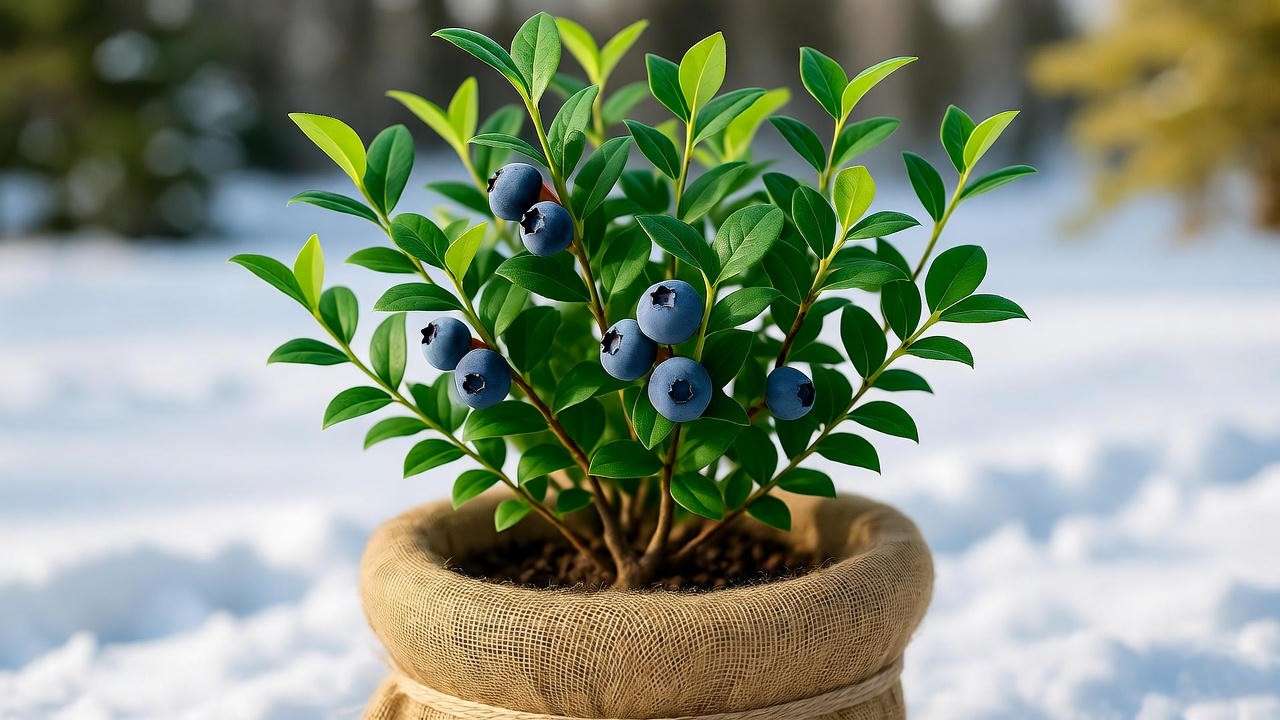
6.3 Propagating Sunshine Blue Blueberries
Want more Sunshine Blue plants for free? Propagation is straightforward. Try softwood cuttings in early summer:
- Cut a 4-6 inch section of new growth with 2-3 leaf nodes.
- Remove lower leaves and dip the cut end in rooting hormone.
- Plant in a mix of peat moss and perlite; keep moist and in indirect light.
- Roots should form in 6-8 weeks, ready for transplanting.
Layering is another option: bend a low branch to the soil, pin it down, and cover with soil. Roots will form within months. Expert Insight: North Carolina State University’s extension service reports a 70-80% success rate for blueberry cuttings with proper care.
7. Frequently Asked Questions (FAQs) ❓
Q1: Can Sunshine Blue blueberries grow in pots year-round?
Yes! Use a 15-20 gallon pot with acidic soil mix and ensure proper drainage. Move containers to a sheltered spot in winter if you’re in a cold climate (Zone 5 or below).
Q2: How do I fix yellowing leaves on my blueberry plant?
Yellow leaves often signal nutrient deficiency or incorrect pH. Test soil pH and adjust to 4.5-5.5 with sulfur. Apply a balanced fertilizer for acid-loving plants, and ensure consistent watering.
Q3: Do I need more than one Sunshine Blue plant for fruit?
No, Sunshine Blue is self-pollinating. However, adding another plant or attracting pollinators can increase yields.
Q4: What’s the best way to lower soil pH for blueberries?
Apply elemental sulfur or organic matter like peat moss 4-6 months before planting. Retest pH regularly, as it can take time to stabilize.
Q5: How long does it take for Sunshine Blue to produce fruit?
Expect fruit 1-2 years after planting, with full production by year 3 if conditions are optimal.
8. Conclusion
Growing Sunshine Blue blueberry plants is a rewarding journey that brings fresh, antioxidant-rich fruit to your table with minimal effort. From selecting the perfect sunny spot to mastering soil pH and pruning, this guide has equipped you with expert-backed steps to ensure a thriving harvest. Whether you’re cultivating in containers or a garden bed, Sunshine Blue’s compact size, low-chill needs, and delicious berries make it a must-have for any gardener. Start your blueberry adventure today, and share your progress in the comments! For more tips, explore our articles on soil pH management or berry recipes. Here’s to the joy of homegrown blueberries! 🫐

